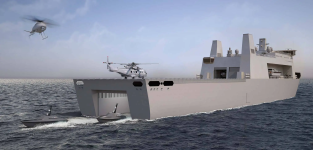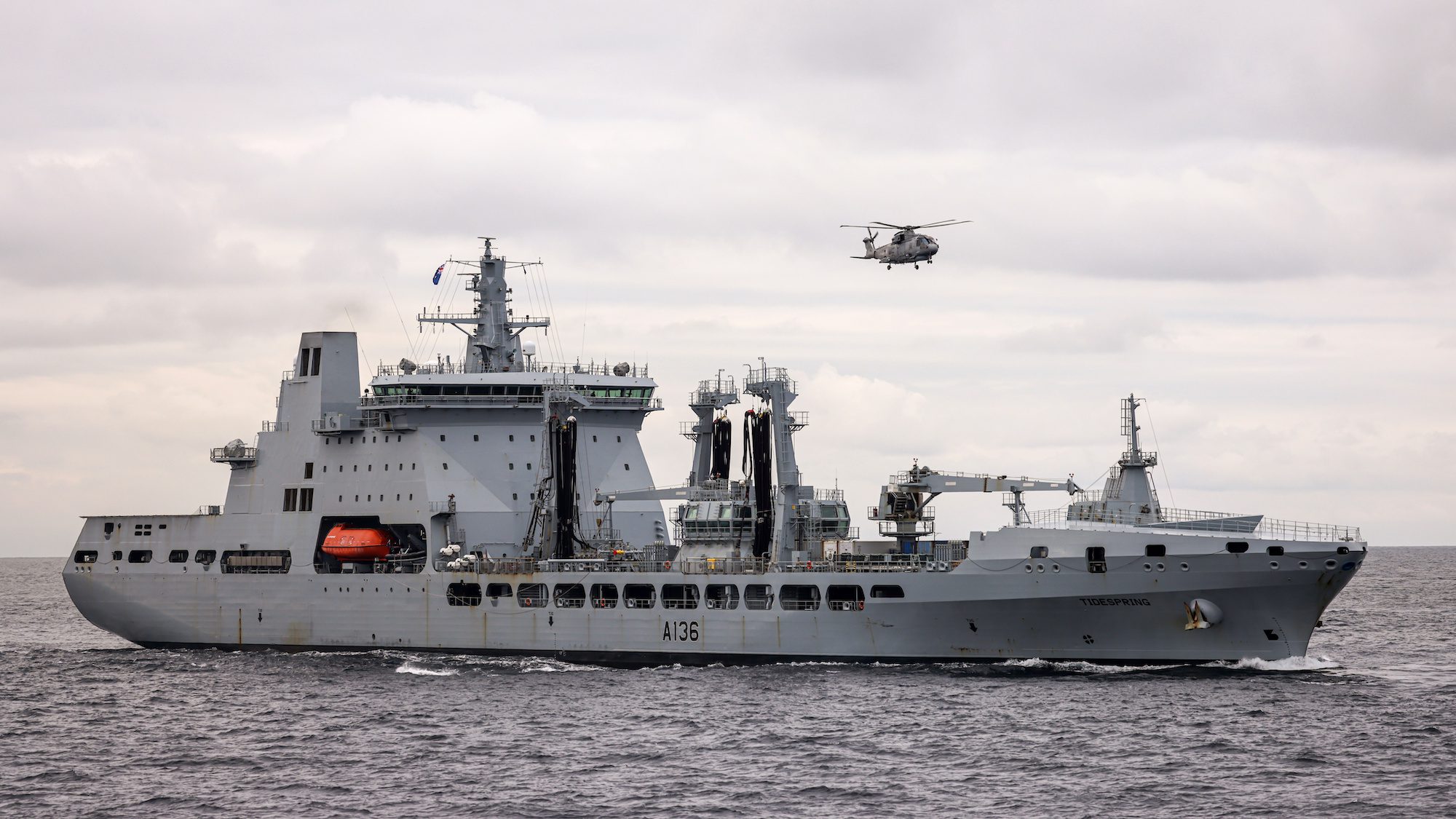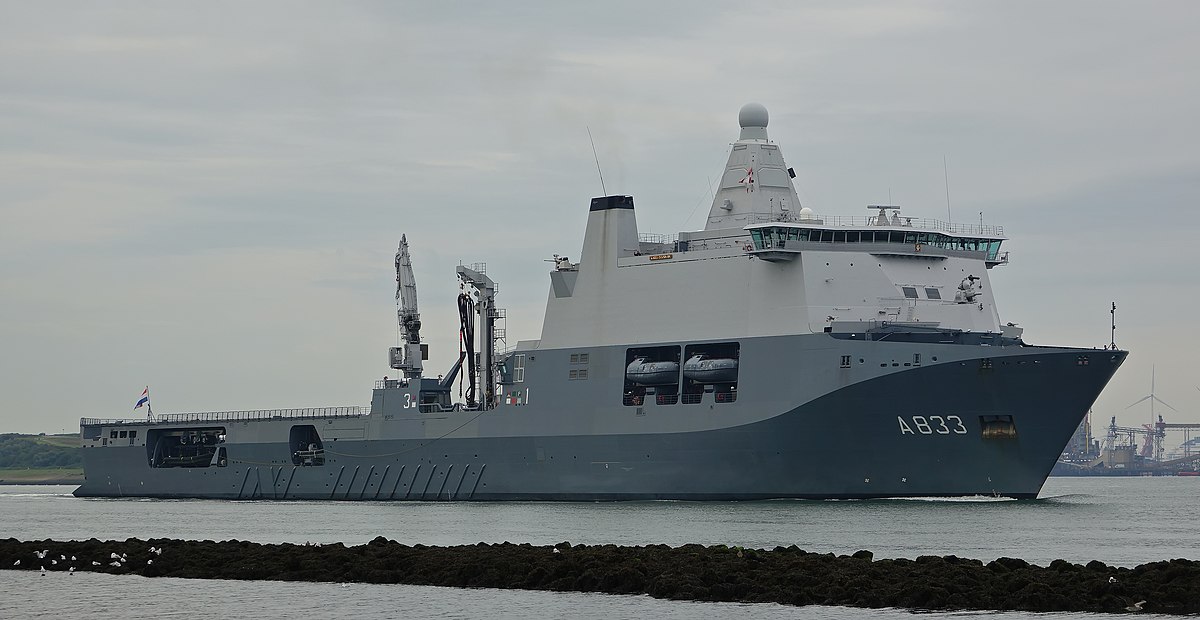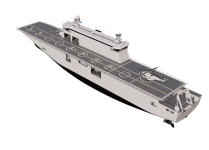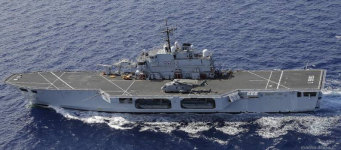Today, there are over 1,000 Seaspan employees involved in the construction and development of Joint Support Ship 1 (JSS1), the future HMCS
Protecteur; and JSS2, the future HMCS
Preserver. Namesakes of the original HMCS
Protecteur AOR 509, and HMCS
Preserver AOR 510, these new vessels will continue to honour the dedication and sacrifices of the generations of sailors who served aboard the original vessels. Both the original
Protecteur and
Preserver served in active engagements, including Operation Friction during the 1991 Gulf War, Operation Apollo during the War on Terror, and regional conflicts in Africa and the Arabian Sea; not to mention their many humanitarian deployments, and participation in NATO and allied naval exercises. Like their predecessors, the new JSS1 and JSS2 will continue this role and provide vital fuel, medical support and supplies to RCN and allied vessels.
At 173.7 metres, the new
Protecteur and
Preserver will be the longest naval vessels ever to be constructed in Canada – about 30% longer than the current
Halifax-class frigates.
And no space on these ships is going to waste.
Along with a maximum complement of 239 personnel, these ships will be able to hold up to 6,875 tonnes of marine diesel and 1,037 tonnes of aviation fuel, enabling a Naval Task Force to stay on missions for extended periods. They will also be equipped with a hangar capable of supporting two CH-148 Cyclones, two dual-purpose (liquid or solids) Replenishment at Sea Stations, an enhanced maritime hospital, two Close-In Weapon Systems, four Naval Remote Weapon Stations, and storage capacity large enough to carry a wide array of supplies for a variety of missions, including armoured and support vehicles, food, water, and other supplies for humanitarian assistance or disaster relief.
As many reading this will know, the design of the
Protecteur-Class is based on the German Navy’s Type 702
Berlin-class replenishment ship, first entering into service in 2001, with the final vessel entering service, the updated
Bonn-class, in 2013. While the vessel design was mature at the time of its selection for the Royal Canadian Navy, a number of changes are being made to ‘Canadianize’ the JSS variant and to enhance its capabilities. Some of these changes include:
- Hangar arrangements and adjacent spaces re-worked to accommodate the CH-148 Cyclone, which is significantly larger than the German Navy’s helicopters.
- HVAC and Insulation upgraded to reflect increased North Atlantic operations and to permit seasonal use in Arctic waters.
- Fitted communications upgraded to incorporate RCN/USN compatible tactical communications and RCAF compatible aviation networks.
- Extensive dry cargo and ammunition handling capabilities incorporated at the expense of a second pair of kingposts.
Constructing JSS1 has included many unique and interesting sets of challenges, but I could not be prouder of Seaspan’s team of engineers, designers, and skilled tradespeople who are working hard to deliver these ships to the RCN. We are truly looking forward to the day when they are fully operational with Canada’s Navy. On JSS1, work is continuing to prepare the vessel for launch in late 2024. The vessel reached full length in early 2023, and installation of the ship’s two kingposts, key to the ship’s Replenishment at Sea (RAS) capability, was completed in the fall of 2023 – this marked the ship’s last major structural block installation. Our focus now has shifted internally, where we are rapidly installing cables and piping: over 300km of electrical cable has been installed on the ship, about 50 per cent of the total needed, and more than 70 per cent of the piping has installed so far, with more being added every day.
On JSS2, construction is proceeding at an accelerated pace. We cut steel on this vessel in 2022, and were pleased to hold the ship’s keel laying ceremony in October 2023. To celebrate the occasion, we welcomed members of the Royal Canadian Navy, including Rear-Admiral Steve Waddell, Deputy Commander of the Royal Canadian Navy; Sea Cadets from 354 RCSCC
Invincible; the Naden Band; local and federal stakeholders; members of the Squamish Nation; and thousands of our employees based here in North Vancouver. JSS2 block construction and grand-blocking continues at a steady rate as we maintain the positive momentum that we developed through construction of the first JSS, along with other NSS vessels. Currently, over 50% of the JSS2’s blocks are under construction, with the latest significant milestone being the delivery of the ship’s bulbous bow, which was just delivered to the shipyard in January from local BC firm Ideal Welders. In Spring 2024, we will achieve main engine loadout, shortly followed by the start of the main cable pull, for electrical installation, and the erection of the ship’s first ‘superstructure’ block.

 www.navylookout.com
www.navylookout.com




